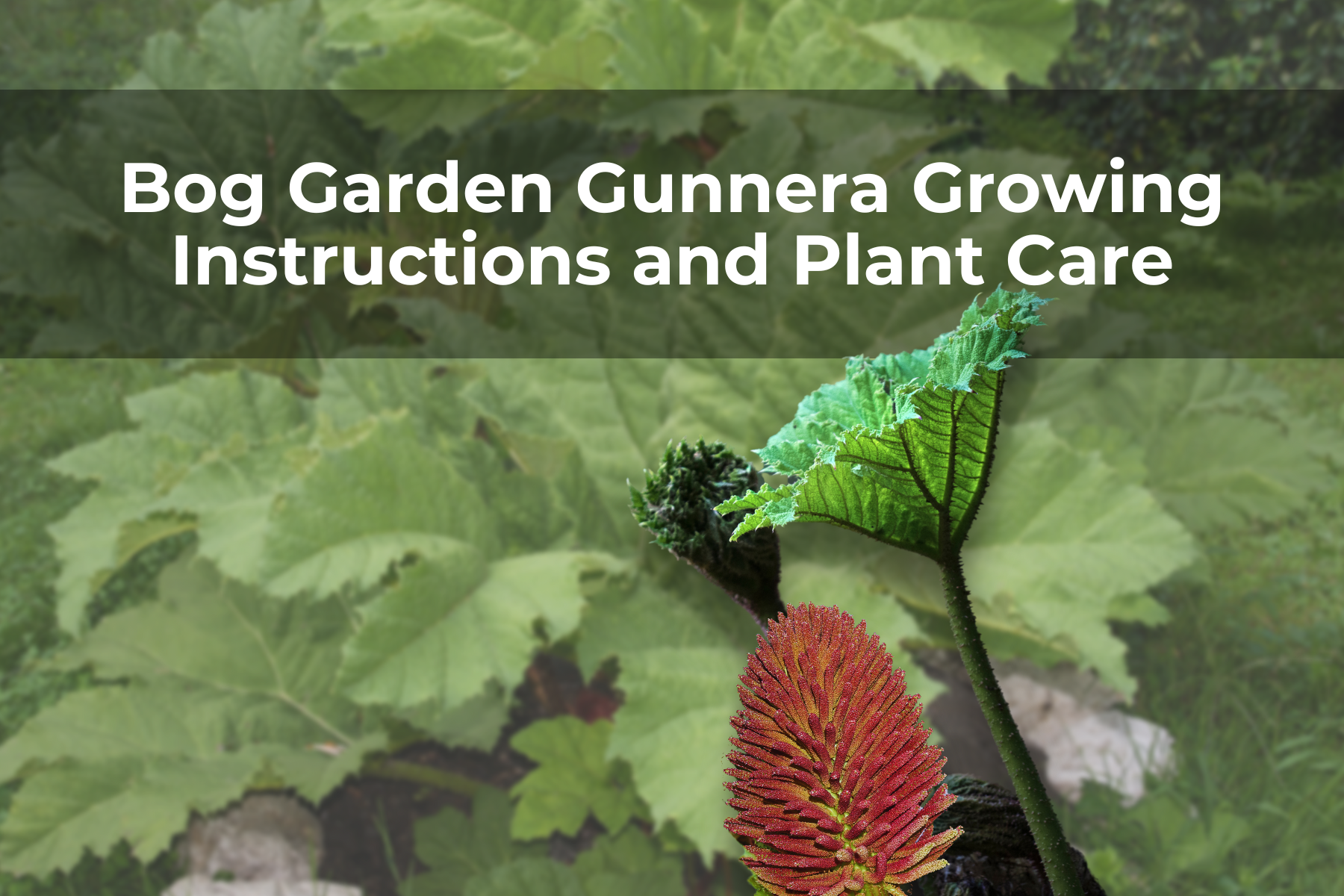Last Updated on April 16, 2024 by Real Men Sow
You can expect your bog garden Gunnera to take many years to develop. The plants started as small seedlings that looked like clumps of moss. After several years they will produce new leaves and then mature into large, wooden-looking plants that are perfect for creating a bog garden.
Don’t panic if the root ball of a gunnera is smashed in shipping. Because this will not cause any damage to the plant. The main thing is that they haven’t dried out during shipping. It is not a problem if a leaf was torn off or soil has been removed from the roots. Bog garden Gunnera will not grow if the crown and root ball are separated. Normal conditions will require that the new leaves take several weeks to regrow. After the first winter freeze, large leaves may be cut back.
Setting up a bog garden involves more than just planting your bog garden plants. It is important to know how to care for this plant so that it can reach its full potential in your garden.
Watering your Bog Garden Gunnera
Hot weather requires that you water your plants immediately upon receiving them. If your temperatures are above 70 degrees during daylight and 50 during the growing season, you should water your plants daily. In cool or cold weather, where temperatures are at or below 45 degrees during the day, don’t water plants until they dry out. Too much moisture can cause root rot and even kill plants.
Bog garden Gunnera needs to be watered every day during hot summer until they have roots at least one foot deep. The soil should be rich in compost and peat, with small stones or pumice. It should not become soggy. They require a constant moisture supply in the summer and hot spring, as well as good drainage during the dry season and winter. The gunnera plants should be 2 to 2.5 feet above the saturated area.
Soil and Location
A few hours of direct sunlight or dappled light is fine for small plants. DO NOT use commercial potting mixes (Miracle-Gro(r), Vigero(r), etc.) These potting mixes are not for annuals. They will cause Gunnera root rot and kill the plants. The following should be included in your potting soil mixture: 10% compost, 10% peat moss, 10% perlite, and 35% bark chips. The pumice and rock can cause problems with the drainage of the potting soil mix. This could lead to the roots rotting and the plant dying. Planting in naturally moist areas requires a raised or mounding bed. Bog garden Gunnera plants require a lot of space and can be difficult to limit in size. Don’t plant them near buildings or other plants. While we guarantee the delivery of healthy, live plants, we are not responsible for any damage to young plants caused by excessive sun or inadequate drainage.
Young Bog Garden Gunnera Plants’ Care Guide
Young gunneras will die from drying out in the heat, too much water, and poor drainage. Bog garden Gunneras can be easily killed, so don’t just plant. For young plants, winter care is essential. If your temperatures are below freezing, do not plant outside. Plant in a larger container, and place it in an area between 30 and 70 degrees. Planting the plant in a larger container, such as 2 gallons or larger, for a season to develop and grow will help increase its success.
A good mix of compost, bark, pumice, peat moss, and bark will help you to drain the soil. In the second year, transplant them to their permanent place before they emerge in the spring. This is particularly important if you live in half-day or full sun. You must ensure that the fertilizer you use is suitable for containers, or it could burn your leaves. Variation in temperature is better than constant. It is important to provide adequate lighting.
Use a quick-draining potting mixture. Then water the plants for several days if they show signs of water stress. Continue to water the leaves until they show signs of water stress. This could be every other day or every three weeks. You will need to water more often as the temperatures rise in spring. Root rot can be fatal in young plants if you overwater them. Your gunnera should increase by at least two-thirds in size during winter. Your winter indoor temperatures should be 70 degrees during daylight and 45 degrees at night.
Special Winter Care For Bog Garden Gunnera Mature Plants
Cut the bog garden Gunnera leaves down after the first frost in fall, and place the leaves on top of the crown. Add 8-12 inches of loose mulch to the crown if your winter temperatures are below 15 degrees. Cover the crown with a tarp, or other waterproof material. This will keep it dry throughout the winter. In the spring, remove mulch and cover it with a tarp or waterproof material.

